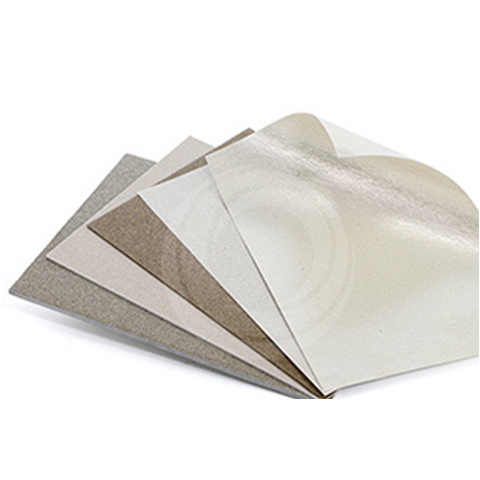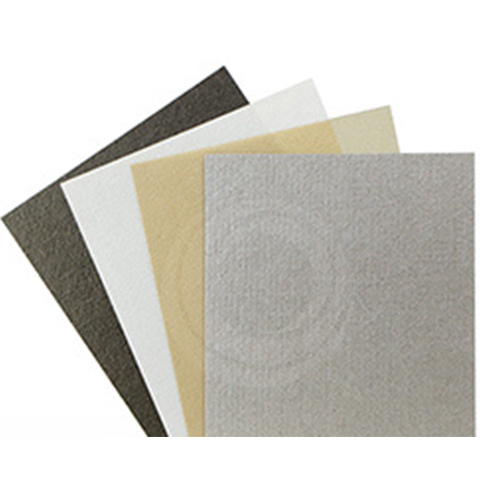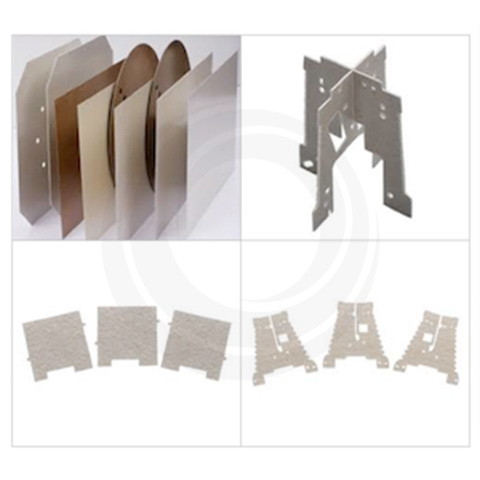
HOMETECH☰




Mica Sheets are made of high-quality Muscovite or Phlogopite, with high performance adhesive pressed into sheet-like insulating material through high temperature and high pressure. They have excellent heat resistance, flame retardancy and electrical insulation. The mica content is about 90% and the silicone resin content is about 10%.
The most common thickness of mica sheets is between 0.1-2.0mm.
Specifications we can provide: Thickness: 0.1 mm, 0.15 mm, 0.2 mm, 0.25 mm, 0.3 mm ...... 5.0 mm; Size: 1000 × 600 mm, 1000 × 1200 mm, 1000 × 2400 mm (can be cut to into the required size); Note: Products with thickness below 2.0 mm can be formed by stamping process and those above 2.0 mm are processed by turning, milling, drilling, etc..
Ordinary mica sheets are also called muscovite, while high temperature resistant mica sheets are also called phlogopite. Muscovite has a high temperature resistance between 600-800 degrees whereas phlogopite have a high temperature resistance between 800-1000 degrees. Muscovite is prevalently used in industrial applications, followed by phlogopite. It is mainly used in industrial applications for its insulation, heat, acid, alkali, pressure resistance as well as peeling properties, and is used extensively as an insulation material for electrical appliances and electrical equipment. Secondly, it is used for manufacturing steam boilers, smelting furnace windows and mechanical parts. Industry applications include building materials, firefighting, as a fire extinguishing agent, welding rod, plastics, electric insulation, paper manufacturing, asphalt paper, rubber, pearlescent pigment and other chemical industries.
The operating temperature for muscovite is 500℃, and the operating temperature for phlogopite is 800℃. They are generally divided into hard and flexible sheets, and the biggest difference between them is that the hard sheet cannot be bent, while the flexible sheet can be bent into a 10 mm cylinder.
The hard mica sheets have uniform thickness, good electrical properties and mechanical strength, less fuming and less odor, and are a new type of electric insulating material. They are widely used in electric blowers, toasters, irons, Heaters, rice cookers, ovens, heaters, microwave ovens, plastic heating rings, metallurgy (such as industrial frequency furnaces, medium frequency furnaces, electric arc furnaces, etc.), medical equipment and other industries, as the heating support, gasket lining and partition of the above appliances.
Flexible mica sheets are flexible and elastic at room temperature and can be folded dozens of times, curled into various shapes and placed under heavy loads without breaking. Depending on the customer's requirements, the voltage capacity can be increased to 1-2 times the conventional standard value. Depending on the required toughness, full and semi-soft sheets can be customized. The mica sheets can be used in hot air guns, induction furnaces, motors, transformers, etc. as cover sheets, separators, insulating sheets or high temperature sealing materials for these appliances, replacing asbestos in the automotive, marine, petroleum and metallurgical industries.
Mica paper in the market are generally divided into muscovite and phlogopite.
The heat resistance of muscovite paper and phlogopite paper are determined by their degree of swelling. As the heating temperature increases, water is produced (loss of crystalline water), which expands in the direction perpendicular to the mica analysis plane. When muscovite is generally heated to 500-600 degrees, the expansion phenomenon is not obvious. When heated to 800-880 degrees, its expansion thickness is 400%-750% of the original. For light colored phlogopite, when heated to 1000 degrees or more, thermal expansion occurs, indicating that phlogopite can be used at 90-1000 degrees, but loses transparency and mechanical properties are also reduced.
1. Electrical properties of mica paper. Mica has a layered crystal structure, so it has anisotropic properties like layered insulation products. The volume resistivity of muscovite is 1014 ~ 1015 gcm, and that of phlogopite is 1013 ~ 1014 gcm. While muscovite is only 108 ~ 109 gcm along the analysis plane, phlogopite is 107 ~ 108 gcm. The dielectric strength of mica decreases with the increase of temperature.
2. Thermal properties of mica sheets. Mica is highly heat resistant, but when the temperature rises to a certain value, the mica loses its crystalline water, and if the temperature continues to rise, the mica will undergo thermochemical decomposition.
3. Chemical properties of mica sheets. Mica has good chemical stability, especially muscovite. Alkali does not affect muscovite, but muscovite can have a weak positive reaction with water, and no reaction to hydrochloric acid. Phlogopite has a strong alkaline reaction with water and increases its acidic concentration proportionately with the acidity of hydrochloric acid upon interaction.
Generally, 50KG/bag. 1,000 KG per wooden pallet or iron pallet.
Dry and moisture proof at room temperature, no expiration date.